This is situated in the city’s Huguenot Quarter, named after the religious refugees who fled France in the late 17th century, many of whom were involved in linen-weaving. The building had been a long-time tailor’s showroom and workshop, previously occupied by a ‘waterproof clothing manufacturer’. However, the longest occupant was the pawn-broking business (here during 1860s–1920s).
A photograph and text about The Linen Weaver.

The text reads: The history of Cork can be traced back as far as 915AD, when Viking settlers founded a trading port using the River Lee as a passage to open waters. Since then the city has changed, the walls that once enclosed the city have been demolished, the old waterways on which Cork was built have been filled. The outlaying marshes were drained to let the city breathe and expand into the metropolitan area it is today. There is still an active harbour downstream of the City of Cork. Within the City’s Coat of Arms, the heritage of the Viking seafarers and traders can still be seen today bearing the motto; ‘A Safe Harbour for Ships’, with the crest featuring a ship at full sail with three masts.
In the late 17th century, Cork had an influx of religious refugees who had fled France, these refugees were members of the French Protestant Church and became known as Huguenots hence ‘The Huguenots Quarter’. The refugees brought with them a work ethic that translated into highly successful business ventures in a variety of craft industries including linen weaving. The Huguenots became masters of the art of weaving linen and produced clothing for the people of Cork.
The earliest record of the building occupying No 7 Paul Street was in 1857, at that time a tin plate worker by the name of Robert Smith had his workshops in these premises. From 1867 it was pawnbrokers shop called Hegarty’s and in 1891 the Cork Banking Company Estate Offices were at No 6. In 1955 a waterproof sports clothing manufacturing company named I.T. Russel & Co occupied both numbers 6 and 7 Paul Street. They remained here until the House of Donegal took over the premises.
For over half a century, the building was occupied by Hegarty’s pawnbrokers, the symbol of which were three gold balls, attributed to the Medici family of Florence, Italy, owing to its symbolic meaning of Lombard. Hegarty’s closed its doors in the early 1920s. An original pawnbroker’s sign, similar to what would have been seen here during Hegarty’s occupancy, is displayed over the stairway leading up to the second floor terrace.
From 1981, the site was occupied by the House of Donegal. At a time when flared trousers and shoulder pads were fashionable, House of Donegal were crafting tailored jackets, suits and rainwear, using the timeless Donegal tweed that fashion still embraces today.
A series of prints showing the different stages of linen production.

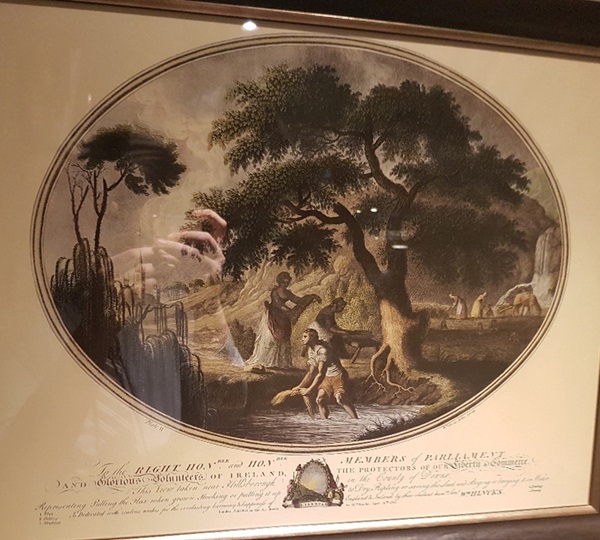
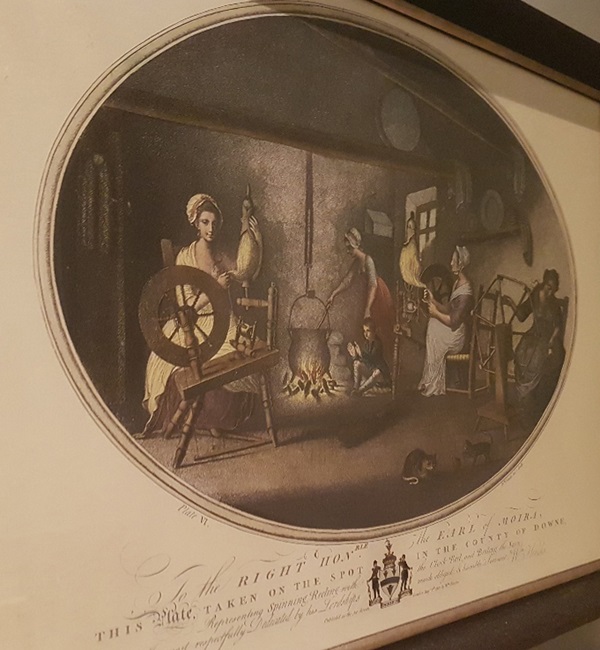
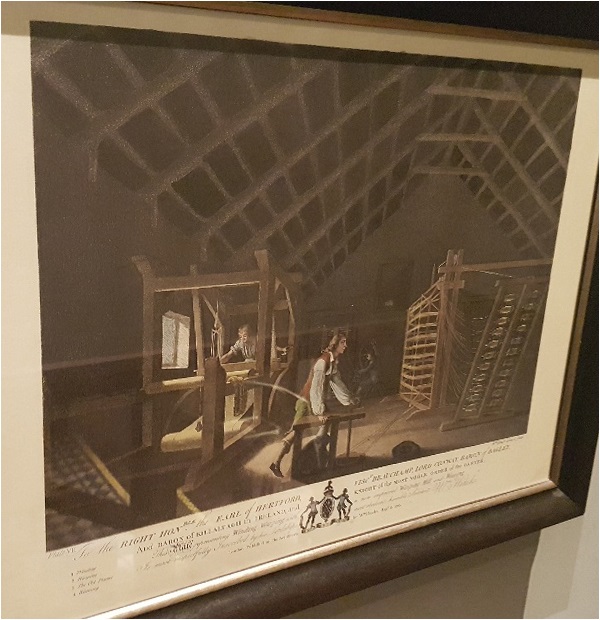
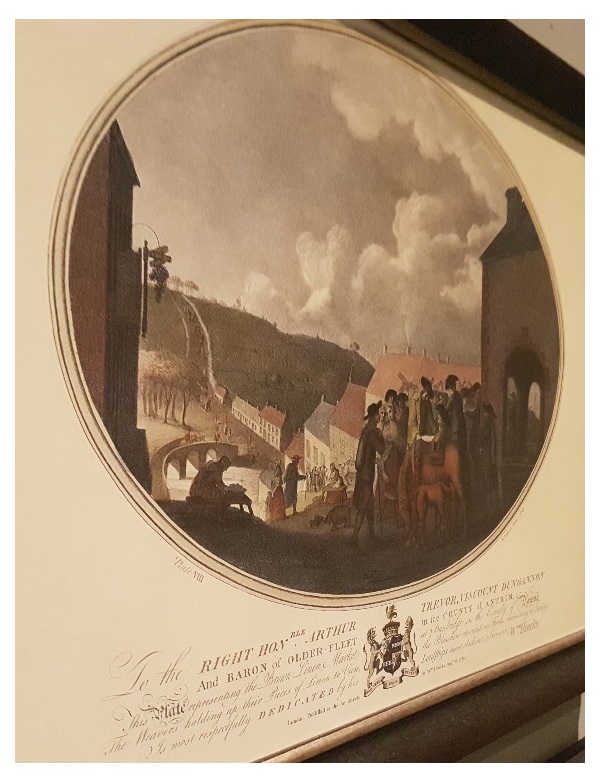

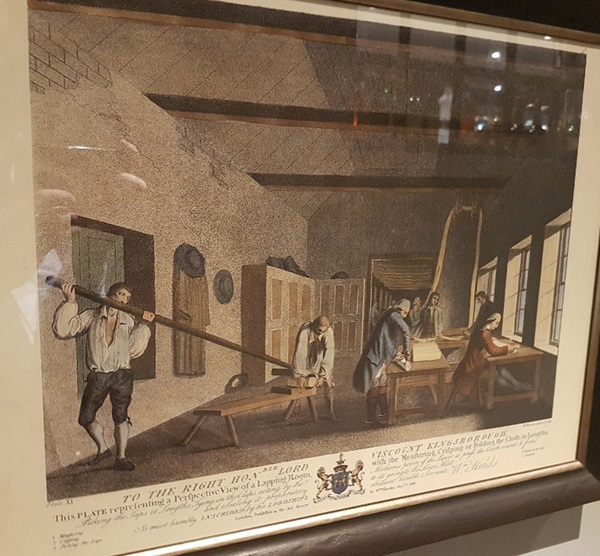
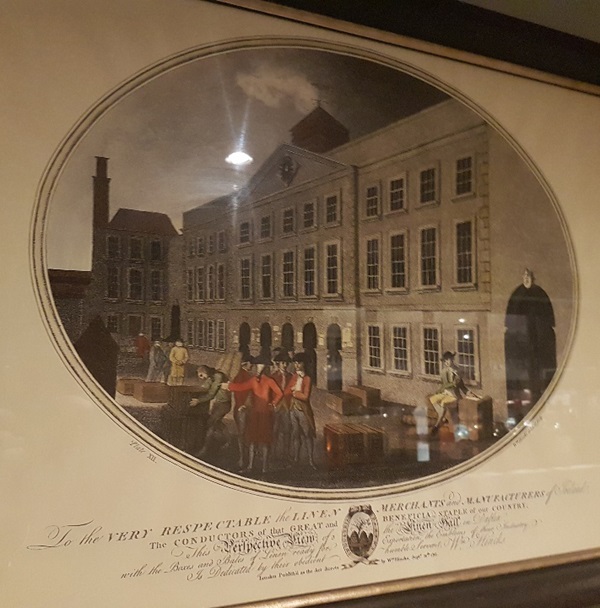
The text reads: Displayed here is a series of prints taken from coloured aquatints by William Hincks c1780 that show the various stages involved in the production of Irish linen, starting with taking the flax out of the bog, separating the rind from the stem of the flax, strengthening it and spreading it.
The next stage is beetling, scotching and hackling the flax in a scotch mill before the yarn is spun, reeled with the clock reel and boiled.
The seventh in the series shows the weaving process, winding and warping with a new improved warping mill. This is the final stage before bleaching, where, ninth in the series, a view can be seen of all the machinery inside a bleach mill, upon the newest and most approved constructions consisting of the wash mill rubbing boards moved by a crank and beetling engine for glazing the cloth.
Following the bleaching process, the linen is taken to the lapping room, where the measuring, crisping and folding takes place.
To complete the series is a perspective view of the Linen Hall in Dublin with the boxes and bales of linen ready for exportation, stamped with the emblems of their industry.
A painting entitled Mills, by Tracy Fitzgerald.
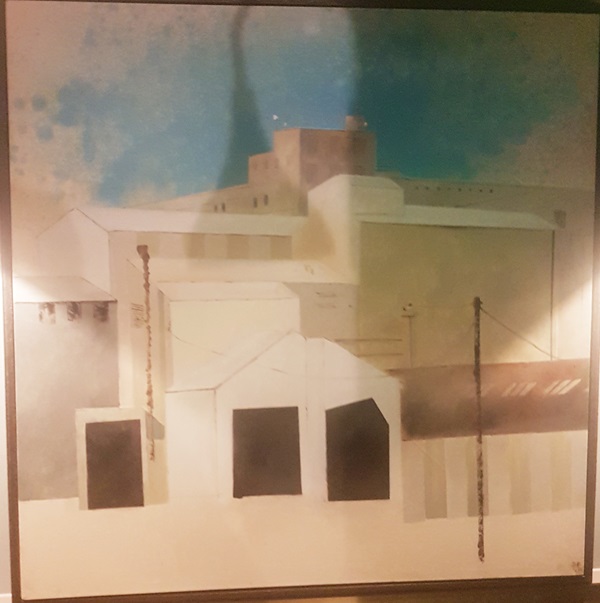
The text reads: A native of Cork city, Tracy Fitzgerald left a career in software development to study Fine Art at the CIT Crawford College of Art and Design graduating in 2012. Fitzgerald can be found working at the Backwater Artist Group studios in Cork city.
“My interest is in space and place, those quieter, often uncelebrated spaces that lie at the heart of our personal realities”.
On her daily commute, Fitzgerald passes the location on which Mills is based. This area is tagged for regeneration and demolition has already begun.
Fitzgerald’s work can be found in public and private collections worldwide including the office of the Tnaiste in Leinster House.
A painting entitled Matchbox City Limits, by Fiona Kelly.
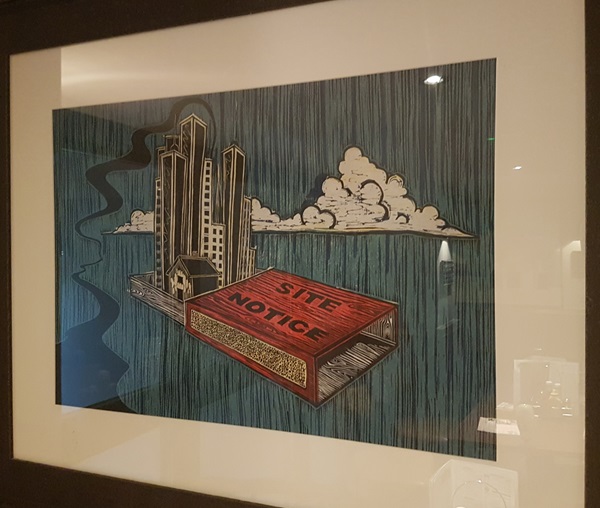
The text reads: This linocut and woodcut was purchased by J D Wetherspoon from local artist Fiona Kelly. Born in Westmeath in 1985, Fiona holds a BA in Fine Art Sculpture from GMT, Cluain Mhure, Galway and a BA (Honours) in Fine Art Printmaking from the CIT Crawford College of Art and Design. She was also winner of Cork Printmakers Emerging Artist Bursary Award in that year.
Fiona’s work can be seen in the public collections of The Jyvaskyla Museum of Art, Finland. The Art Students League of New York USA and at the CIT Crawford College of Art and locally in the Cork Institute of Technology.
“My research into wasteland and abandoned spaces alludes to isolation and the interim. My observations of the manmade landscape logographic movement, stagnation and metamorphosing debris became representations, characters in contemporary fables who narrate a legacy of longing, disposability and elusion”.
A painting entitled A Million Miles Away, by Eugene D’Arcy.
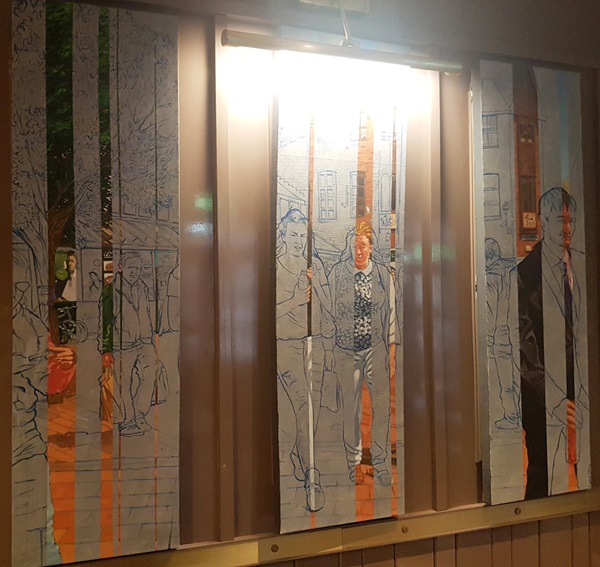
The text reads: The original canvas triptych was commissioned by J D Wetherspoon from local artist Eugene D’Arcy. Eugene was born in Cork and completed a BA at the Crawford College of Art and Design Cork in 2002. He has exhibited at solo shows in Toulouse, France and Innishannon, Cork and at a number of group shows.
Eugene works predominantly in the medium of painting mostly oil on canvas and his signature work consists of bright, bold colours with vertical lines of photographic painting with a backdrop of sketch like line art.
“The deconstruction of the paintings elements involves the user to investigate the abstracted information thus ‘filling in the blanks’. This painting is based on Rory Gallagher place, named after the famous rock musician that lived in Cork. One of his famous songs was “A million miles away”. In the painting I think the people are in fact a million miles away in their thoughts as they walk through the city”.
External photograph of the building – main entrance.

If you have information on the history of this pub, then we’d like you to share it with us. Please e-mail all information to: pubhistories@jdwetherspoon.co.uk